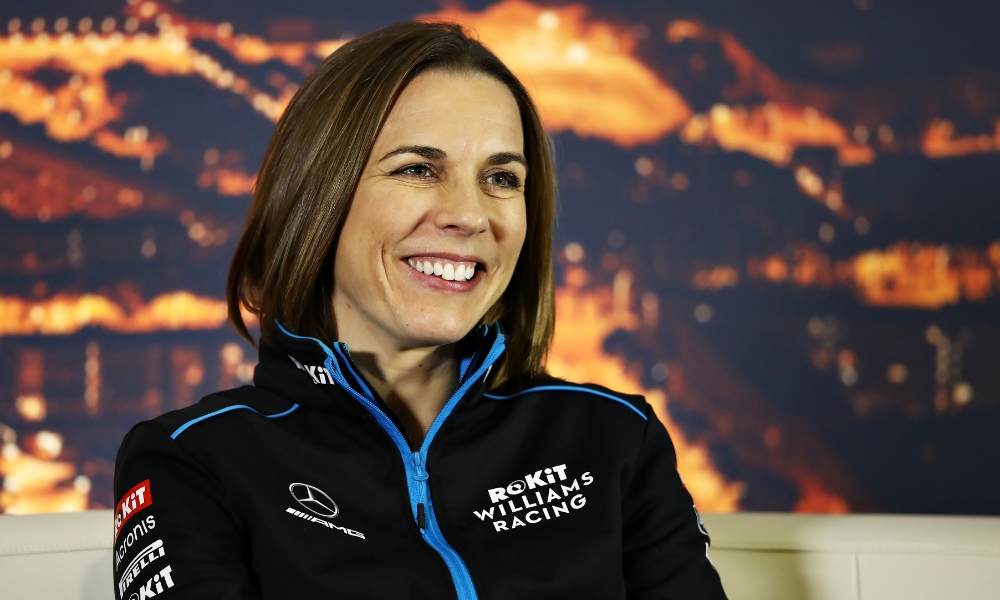“Back in the chair. Be afraid, be very afraid.”
Intentionally or not, the first words of Claire Williams’ unexpected return to the latest season of Netflix’s Drive to Survive repeated the line made famous by Geena Davis’ character in the 1986 remake of horror classic ‘The Fly’.
In many ways, Williams would dearly love to be a fly on the wall in the paddock of her family’s eponymous Formula One team, which she left behind in 2020 shortly after it was sold to private investment firm and current owner Dorilton Capital.
“I think what was weird was being outside of it and looking in,” Williams tells BlackBook Motorsport, reflecting on her appearance in the docuseries’ most recent season. “I’m so used to running a team and having everyone else judge me, and then I’m on the other side of the fence looking in and having to judge other people.”
A storied history
Formed in 1977 by her father – the late, great Sir Frank – the Williams team is the second-most successful constructor in Formula One history, while only Ferrari and McLaren have entered more races. Because of those family ties, the only thing Claire Williams has ever known is motorsport, explaining that she “lived my whole life through the lens of Formula One”.
“I started my early career through Silverstone,” she continues. “I started working there when I was in my early 20s and then, in 2002, I started working for Williams.”
Sir Frank stepped down in 2012 after 35 years in charge of the team, a move he described at the time as “the next stage in the gradual but inevitable process of handing over the reins”. He retained the nominal title of team principal, but his daughter was left as the sole family member on the Williams board. She was duly appointed deputy team principal in March 2013, making her the de facto team boss.
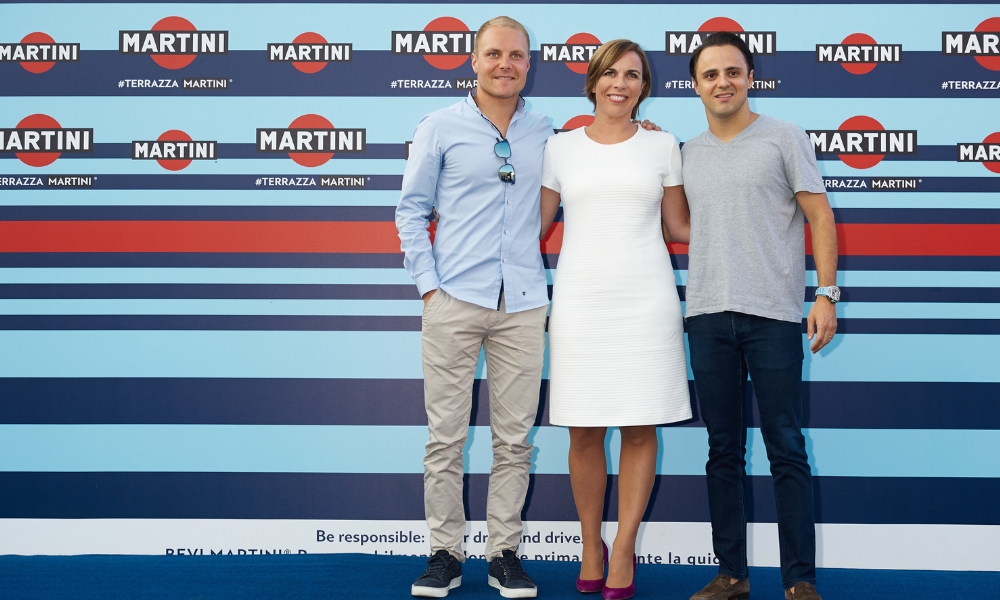
Claire Williams enjoyed great success with the driver pairing of Valtteri Bottas and Felipe Massa, which recorded 14 podiums and one pole position between 2014 and 2016
Under her leadership, the team enjoyed initial success, especially with the pairing of Felipe Massa and Valtteri Bottas, which Williams admits was her “favourite driver lineup”. With those two behind the wheel, the team went from finishing ninth in 2013 to securing back-to-back third-placed finishes in the constructors’ standings in Williams’ first two full seasons.
“I got 15 podiums during my time, I don’t think any team principal outside of Toto [Wolff] and Christian [Horner], in the last 14 years, have had 15 podiums,” she points out. “I’ve scored a quarter of Williams’ total points tally in the team’s entire history. That’s a lot of points. But people forget that because of the last three years of my time.”
Deciding to sell
Those last three years were difficult, although the blame for Williams’ slide towards the back of the grid lies in part with the unbalanced financial structure of Formula One at the time.
The commercial terms agreed with then-series owner CVC Capital Partners were heavily in favour of the big teams, with Williams only securing a US$10 million heritage payment per season, in addition to the end-of-season payment determined by a team’s finishing position.
This, combined with the financial impact of the global pandemic, took its toll on the Williams team, the last remaining outfit that could be considered a ‘privateer’ entry. The team finished last for three seasons in a row between 2018 and 2020 and scored just eight points in total.
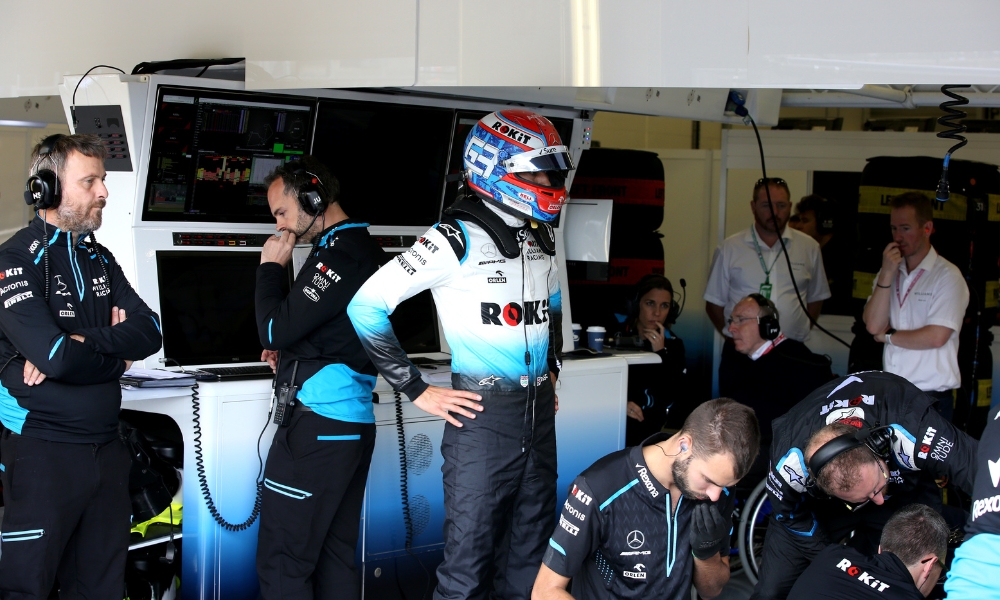
The 2020 Formula One season was the Williams team’s lowest ebb, finishing with zero points for the first time in the modern era
In the end, Dorilton Capital purchased the team in August 2020 for US$179.5 million, a far cry from the billion-dollar valuations attached to Formula One teams today. While the sale was difficult and emotional, Williams is proud of “the successful sale” that meant “we didn’t go into administration” and “never made anybody redundant”.
Following the sale, Williams stepped down from her position in September 2020 after the Italian Grand Prix.
“45 years in Formula One is a really long time and it shapes your life, defines your character and who you are,” Williams reflects. “I lived and breathed Williams my whole existence, so four years out of the sport still feels quite surreal, if I’m honest, and sad.
“I miss it. I miss Formula One. It’s an incredible world to be a part of, and it is all-consuming, particularly when you run a team.
“It is very difficult to leave and find meaning and purpose elsewhere, but I have a young son whose formative years I missed out on because I was busy running Williams. I get to be his mum, I get to be a wife. We’ve done a house move, I do some work here and there – and that’s a very nice way to live.”
Go deeper
- ‘We are making steps, but we are not there yet’: Analysing the state of play for women in motorsport
- The SkyPad, Martin Brundle interviews, and remote production: Inside Sky Sports’ award-winning F1 coverage
- Podcast | F1 Academy, Claire Williams, and motorsport’s most impactful partnerships
A dearth of diversity
While Williams looks back fondly at her time in Formula One overall, the reality is that she was the sport’s last female team principal. What’s more is that she’s one of only two in the series’ history alongside Monisha Kaltenborn, who led Sauber between 2010 and 2017.
This lack of women currently occupying the top jobs in motorsport also could have played a part in Williams’ cameo in Drive to Survive. Netflix may have been stirred into action by research carried out by Females in Motorsport back in 2022, which found that women make up less than three per cent of speaking time across the first four seasons.
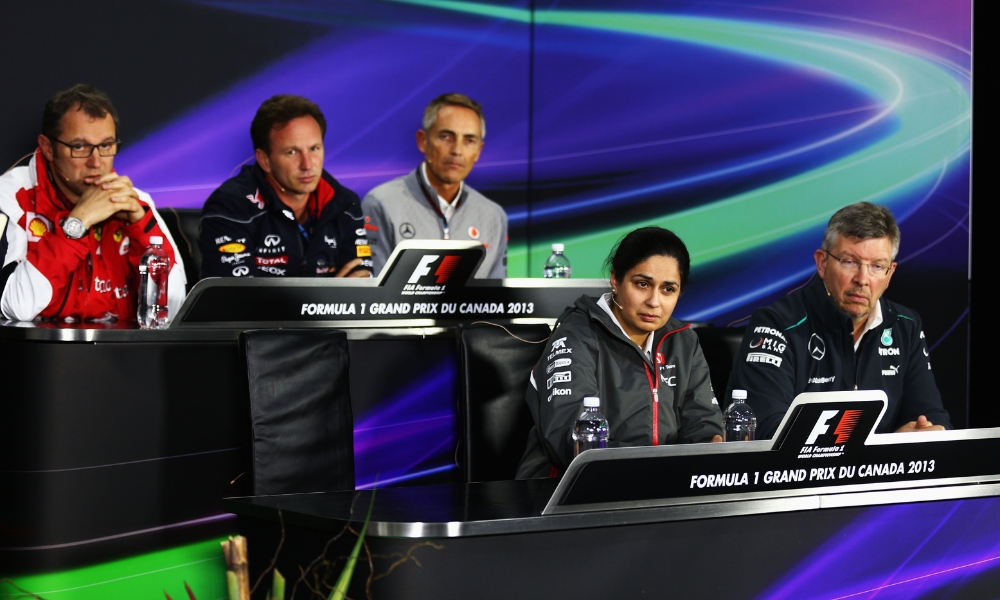
Monisha Kaltenborn was the first female team principal in Formula One history, leading the Sauber Formula One team between 2010 and 2017
“I know the programme had received a lot of criticism for having so few females on screen, which I think is a shame because there are a lot of women now working in the sport and so much proactive work has been done around trying to drive more women into Formula One,” says Williams.
“There’s clearly a lot more work that needs to be done in that area, but my greatest consideration, what I wanted to achieve, was showing that women have worked in the sport, remind people that a woman used to run a Formula One team, because that’s not the case today.”
Progress has certainly been made, especially since Williams’ time in Formula One, but there is a long way still to go. The recent treatment of F1 Academy managing director Susie Wolff, arguably the most influential woman in motorsport today, highlights the archaic attitudes that remain.
“We’ve still got an all-male team principal lineup”
This is where Williams sought to leverage her position to influence positive change for other women in motorsport.
During her time in Formula One, Williams gave Wolff a practice session at the 2014 British Grand Prix, which was the last time a woman to take part in a Grand Prix weekend. Williams also gave a development role to Jamie Chadwick, the three-time W Series champion, while also campaigning for and promoting greater diversity and inclusion across Formula One.
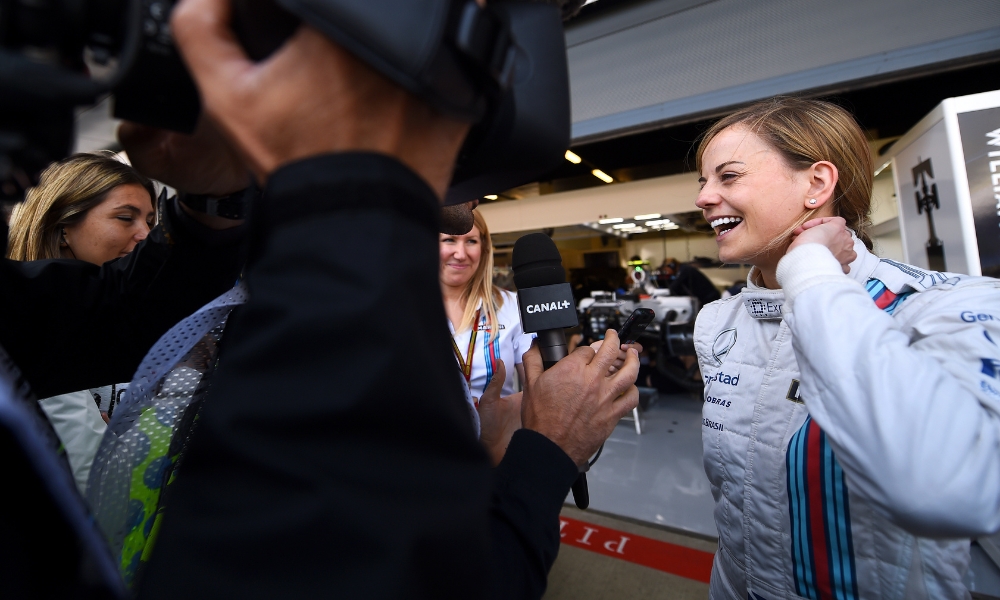
Susie Wolff was the last woman to take part in a Formula One weekend, an opportunity provided by Claire Williams during the first practice session of the 2014 British Grand Prix
“I’ve always been a keen advocate of getting people across all spectrums of the sport into teams and, certainly when I was working at Williams, that was a key goal of ours,” she says.
“A cornerstone of our diversity programme was to make sure that we encouraged females to come in across all different disciplines within the team, whether that be into the aero department, the design office, onto the race team itself.
“We had real success with that, but it takes an enormous amount of proactive work and people thinking about it every day.”
According to Williams, it is this proactivity that is so crucial when it comes to improving diversity, because there is an “unconscious bias” that holds Formula One back from delivering change faster.
“We grew our female workforce while I was with the team by ten per cent, which was one of the greatest growths across all of the Formula One teams,” she adds
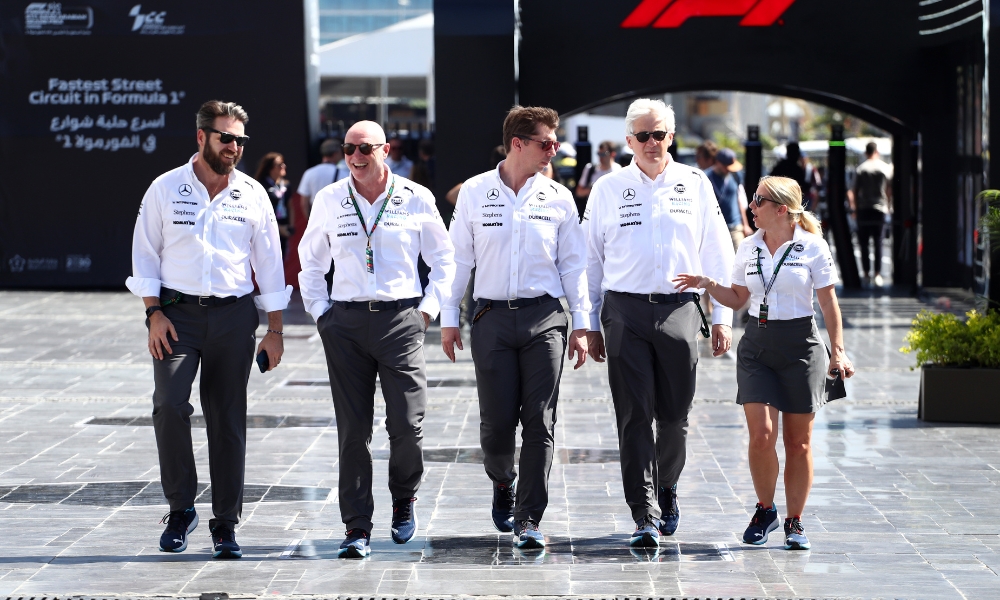
It will take time for Formula One to achieve a more diverse paddock, with the majority of senior positions filled by men
Further research would suggest that Williams is being modest, as an interview with The Telegraph in 2019 revealed the actual figure to be 17.6 per cent. The crucial thing now, though, is for teams to not make hires simply to fill diversity quotas, but to enact meaningful change by appointing women to senior roles.
“It would be hugely important for the sport to see more women in those really senior positions,” states Williams. “I left the sport four years ago and we’ve still got an all-male team principal lineup. How many of the CFOs in the paddock are female? How many people officers are female? How many chief aerodynamicists? How many chief technical officers?
“I imagine you can probably count them on one or two hands, so Formula One has a way to go when it comes to integrating more women into the workplace.”
Remaining “territorial” over Williams
While taking issue with the fact that all team principals in Formula One are male, the 47-year-old does have positive things to say about the man currently in charge of the Williams team, James Vowles.
“I’m really pleased that someone like James is running that team,” Williams says. “Not many people have the experience that you need to run a team, let alone bring a team up that was in pretty bad shape – if I can say that because I was running it!
“The new owners, Dorilton, staged a brilliant coup when they managed to bring him across from Mercedes. I’m very territorial over Williams and who’s running it and who’s representing it, even though it’s not ours anymore.”
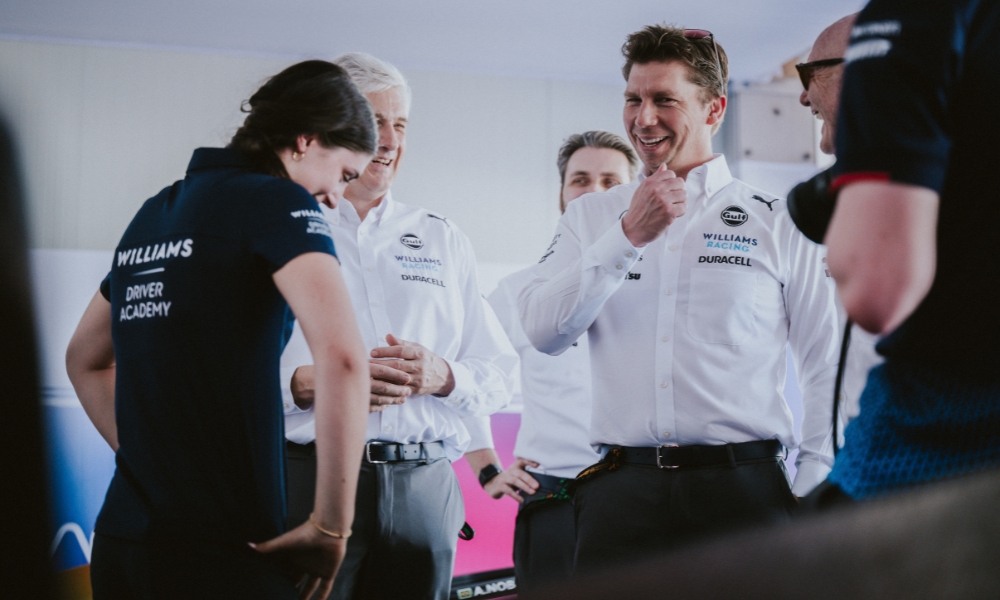
James Vowles has been a steadying influence at Williams, delivering seventh in the constructors’ standings last season, the team’s best result since 2017
Williams also reveals that Vowles had the courtesy to tell her that he would be stepping into her father’s old office at the team’s Grove facility, something the previous team principal did not do. One thing that Vowles has to deal with that Williams did not during her time in the sport is the budget cap, the introduction of which Williams lobbied heavily for due to the team’s financial position.
“When your father built a team that he put blood, sweat, and tears into with the rest of the people that used to work at Williams with him and Patrick [Head] … that’s an enormous legacy, one that, as a family, we will always remain incredibly proud of,” Williams states.
“That’s one of the reasons, I suppose, that Dorilton wanted to keep the name Williams. There’s a huge amount of value and legacy within that.
“Once your dad has put that amount of work into something, you absolutely want to ensure that the person that’s taken over is up to the job, and I think James is.”
Protecting a legacy
Even though Williams now watches from the outside, it is still her family name hurtling around the Formula One circuits, so the attachment to the series goes beyond merely her memories in the sport. It’s interesting, then, to compare Williams’ stance on protecting the legacy of her old team and the future direction of Formula One as a whole.
“It’s a new era and Formula One does move incredibly quickly, and Formula One forgets incredibly quickly as well,” says Williams. “There’s an enormous amount of people that have provided the foundations for Formula One … but time does move forward.
“It’s important to respect its history, to be mindful of it, and to understand it. But equally, you’ve always got to look to the future.”
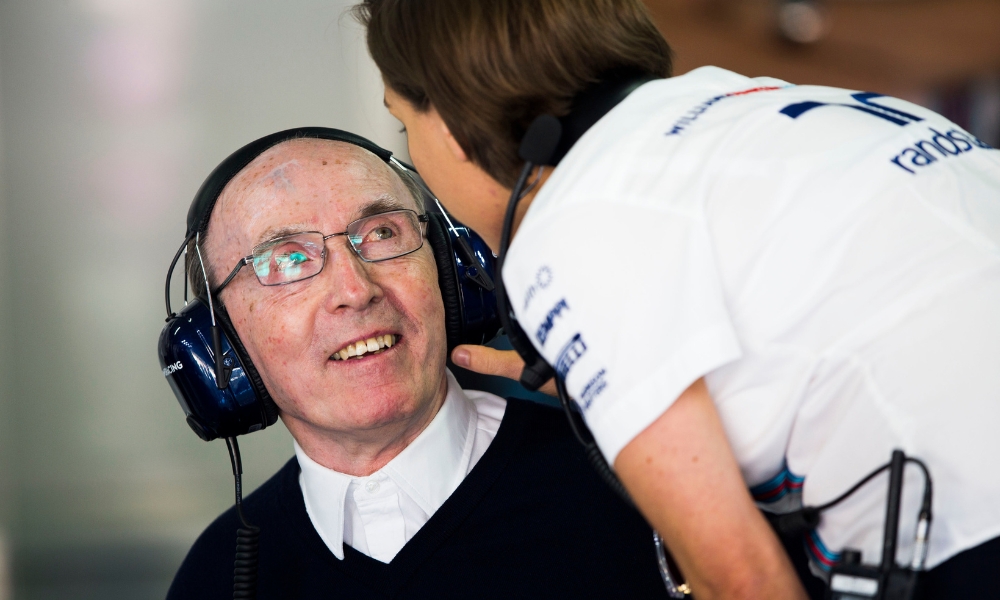
Between them, Sir Frank and Claire Williams dutifully steered the Williams Formula One outfit for 43 years
That future has seen the series expand its horizons with new races, which Williams admits to being “quite jealous” of not being a part of, especially with destinations like Miami and Las Vegas now on the calendar.
Despite being excited about Formula One’s new direction, she is mindful that a balance must be found to retain the history and traditions of the series, aligning with her sentiments around the Vowles-led Williams outfit.
“I don’t see how [the growth] can be a negative for the sport, but now it’s about how the sport protects that and protects its own value by not causing itself any harm or damage,” Williams outlines.
Acknowledging history while always looking forward is something Williams gets from her father, Sir Frank.
“My dad never celebrated any race that Williams won over the years, and they won 114 of them,” she recalls. “We’ve got to look to the next race because our competition is hot on our heels and they’re going to try and beat us.
“If we always think about the past, what’s been done before, then we’re going to lose. And you don’t want to lose in Formula One.”

BlackBook Motorsport Forum is back for its 10th anniversary edition. Join us in London this April to navigate the transformation of motorsport and the trends driving the industry forward into the next decade.

